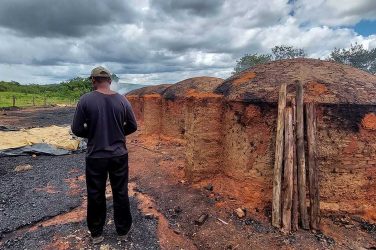Earlier this month, on January 3, Brazilian Justice Ellen Gracie of the Supreme Federal Court suspended Administrative Ruling n. 820 issued by the Ministry of Justice, which had, in 1998, established the demarcation of the Raposa/Serra do Sol indigenous land as a continuous strip in Roraima.
As a result of this new court decision, obstacles preventing the ratification of the indigenous land as a continuous strip have returned.
The decision of the Justice must be reviewed in a plenary session of the Supreme Federal Court, which will reconvene in February. Until that time, the process of ratifying the bounds of the indigenous land will remain suspended.
Thus, just like during the Fernando Henrique Cardoso government in 2003 and at the start of 2004, the Federal Government was negligent, and allowed the opportunity to ratify the Raposa/Serra do Sol land as a continuous strip to pass it by.
This had been possible between December 15, when justice Carlos Ayres Britto suspended the court orders against Administrative Ruling n. 820, and January 3, 2005.
With the 2005 budget negotiations and the maintenance of the wide base which sustains the government, which includes regional oligarchies, large landowners and other interested parties, once again recognition of the rights of the indigenous people of Raposa Serra do Sol has been delayed.
Every time this decision is postponed, the offensive of the anti-indigenous sectors against the constitutional rights acquired by Brazilian peoples gains intensity.
Information has reached us from Roraima according to which rice farmers are already planning to invade more indigenous lands with their plantations. The scenario of threats of violence against the indigenous people continues likely in the region.
Ratification of indigenous lands creates, in the majority of cases, tension in the political game with the country’s oligarchic sectors.
Not even the appeals of Brazilian civil society, CNBB (Conferência Nacional dos Bispos do Brasil – National Conference of Brazilian Bishops) or international bodies such as the OAS, which asked the Brazilian government to adopt precautionary measures to safeguard indigenous rights, seem to have been enough for the government.
According to a newspaper in Roraima, in a meeting held at the Presidential Office with the State Governor, Ottomar Pinto, Minister of Political Coordination, Aldo Rebelo, senators Mozarildo Cavalcanti and Augusto Botelho, and federal deputies from Roraima, the President stated that the final decision on demarcation would be close to a consensus and nobody would be taken by surprise.
The rights of indigenous people, which have already been recognized by the Brazilian state in the Federal Constitution and confirmed by the Minister of Justice, have been brought back into the political arena to be discussed again, with a predetermined result going against the indigenous, due to the dispute between unequal forces.
A process of rights negotiation, when the law of the strongest always dominates, has therefore begun.
The first question asked of the indigenous people concerns how great a part of their rights they would be willing to give up.
To force through an agreement, the weaker party is subjected to all types of pressure.
At local level, this strategy reveals its cruelest side with indigenous people getting injured or even shot dead, the destruction of communal houses, and the kidnapping of religious people in the Diocese of Roraima, who are known for their position in favor of the indigenous cause together with the negligence of the authorities.
There is no doubt about the historic presence of indigenous people in the Raposa/Serra do Sol land, but there is a strong economic interest in the indigenous land.
Cimi ”“ Indianist Missionary Council
www.cimi.org.br




